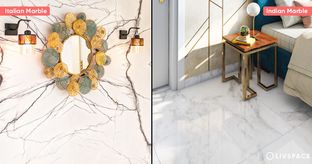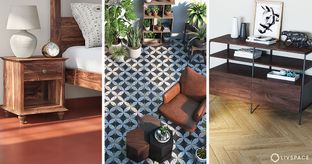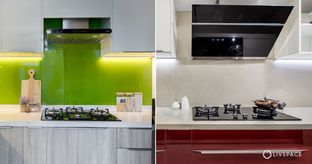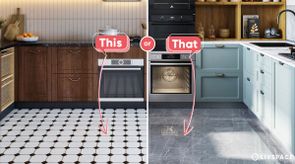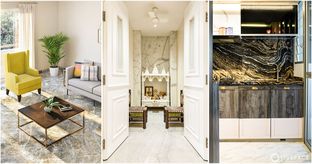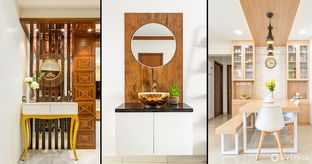In This Article
- Marble vs Vitrified tiles #1: Properties
- Marble vs Vitrified tiles #2: Variety and finishes
- Marble vs Vitrified tiles #3: Aesthetic value
- Marble vs Vitrified tiles #4: Maintenance
- Marble vs Vitrified tiles #5: Durability
- Marble vs Vitrified tiles #6: Cost
- Marble vs Vitrified tiles #7: Installation
- Marble vs Vitrified tiles #8: Where to use them
- Types of marble flooring
- Summary
- Comfort and convenience
- DIY marble flooring
- Eco-friendly option
A gorgeous floor is one that floors anybody who enters your home! From marble to granite, there are so many options available! Selecting a flooring option like vitrified tiles vs marble can be a daunting task since installing it is a time-consuming process. Therefore, it is important to take your time and weigh the options before you make a decision about your flooring. There are a number of things to know before choosing floors for your home.
A common dilemma for Indian homeowners is choosing between the time-honoured marble and the relatively newer but equally popular vitrified tiles. Read on to know more about the marble vs vitrified flooring debate.
Marble vs Vitrified tiles #1: Properties
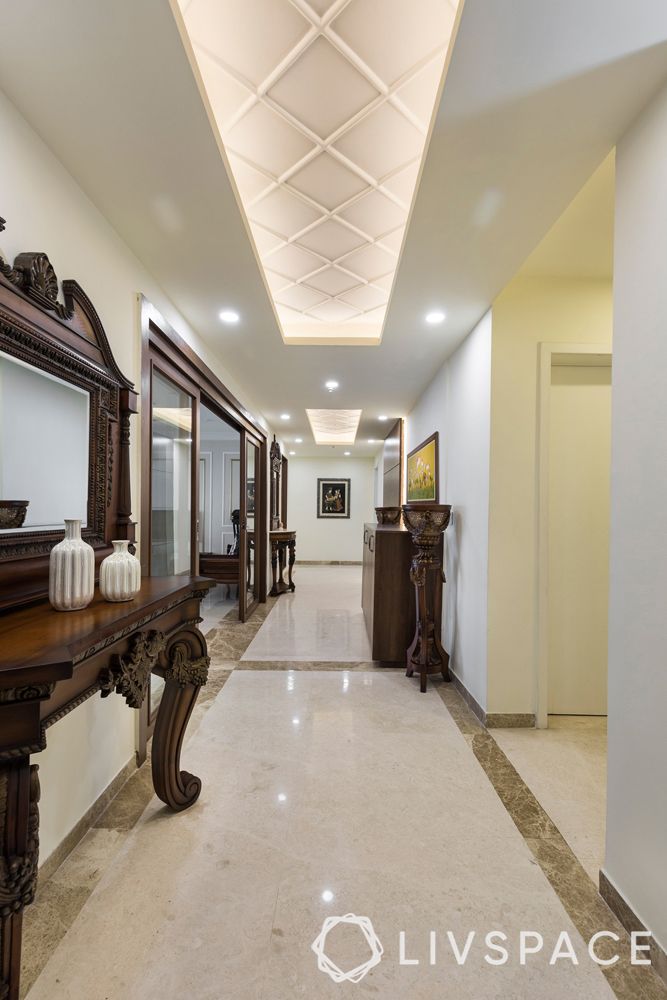
A naturally occurring stone formed from calcite, dolomite or limestone, marble is a dense, porous stone with a high water absorption rate. Featuring fascinating swirls and veined patterns on the surface, this stone has been widely used in architecture as flooring and wall cladding.
A mixture of clay and other minerals like silica, quartz and feldspar baked at high temperatures composes vitrified tiles. This process forms a glassy substrate throughout the tile giving it its characteristic smooth texture. Generally coated with an external glaze, these tiles have a low water absorption rate and are durable.
Marble vs Vitrified tiles #2: Variety and finishes
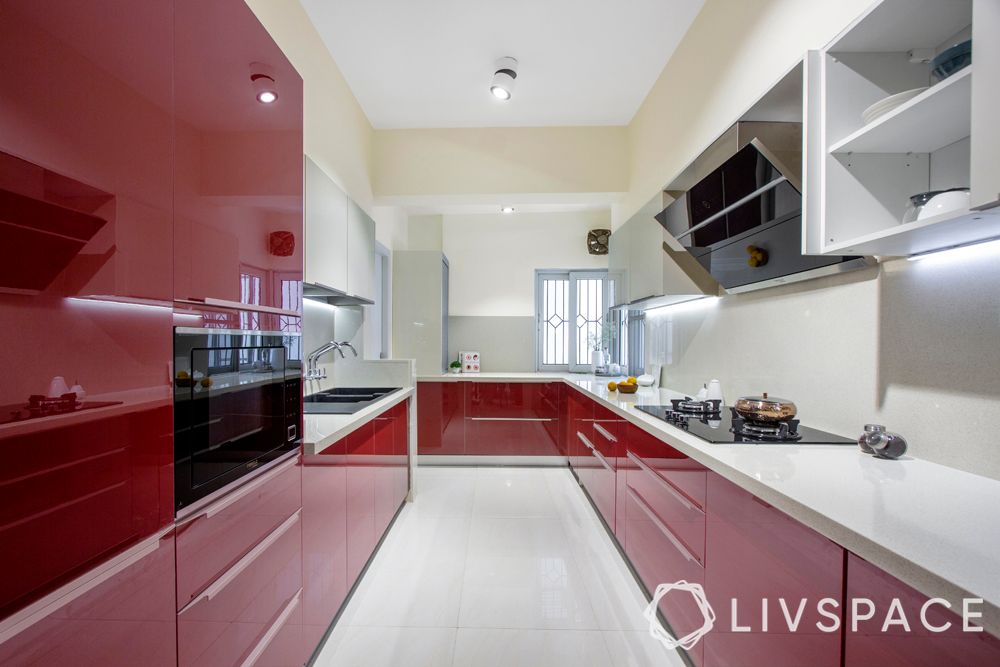
A distinctive material with a personality of its own, marble flooring is available as blocks, slabs or tiles. Commonly found in shades of white, black, green, brown, grey and other natural hues, different grades of marbles will absorb water differently. Polished marble is used to achieve a glossy finishes while honed and sand marble can be used for matte, rustic textures.
Vitrified tiles are man-made and come in a large variety of designs, colors, prints and textures. You can design tiles to simulate natural materials such as wood, bamboo and even marble. Suitable for both interior and exterior use, vitrified tiles are available in glossy, matte and anti-skid finishes.
Marble vs Vitrified tiles #3: Aesthetic value

Flooring with marble has long been the symbol of luxury and opulence. The flooring of choice for palaces around the world, each piece is unique in its own way. The gleam of polished stone and its beautifully authentic, natural look adds to the aesthetic appeal.
While vitrified tiles flooring is available in a huge array of eye-catching colors and finishes, the overall look is less authentic when compared to natural wood or stone. While it is possible to create a faux-marble effect using vitrified tiles, the grout lines in laying of floor tiles are more visible when compared to marble.
Marble vs Vitrified tiles #4: Maintenance

A naturally occurring material, marble tends to react very easily with most substances. Marble reacts with even dilute acids (read vinegar, mustard, citrus and other common household items) causing stains. You must clean any spills on marble flooring immediately to prevent permanent marks. You can clean the floor with mild detergent and water, provided you wipe dry immediately. Marble flooring will also require periodic application of a sealant to protect it from moisture. Regular polishing can breathe new life into your old marble flooring.
Vitrified flooring tiles are relatively easy to clean and maintain. Thanks to their non-porous nature, these tiles absorb very little water and therefore are resistant to most stains. Regular dusting and wiping is enough to keep your tiles gleaming. Since tiles are readily available in standard sizes, one can replace broken tiles easily with identical alternatives.
Marble vs Vitrified tiles #5: Durability
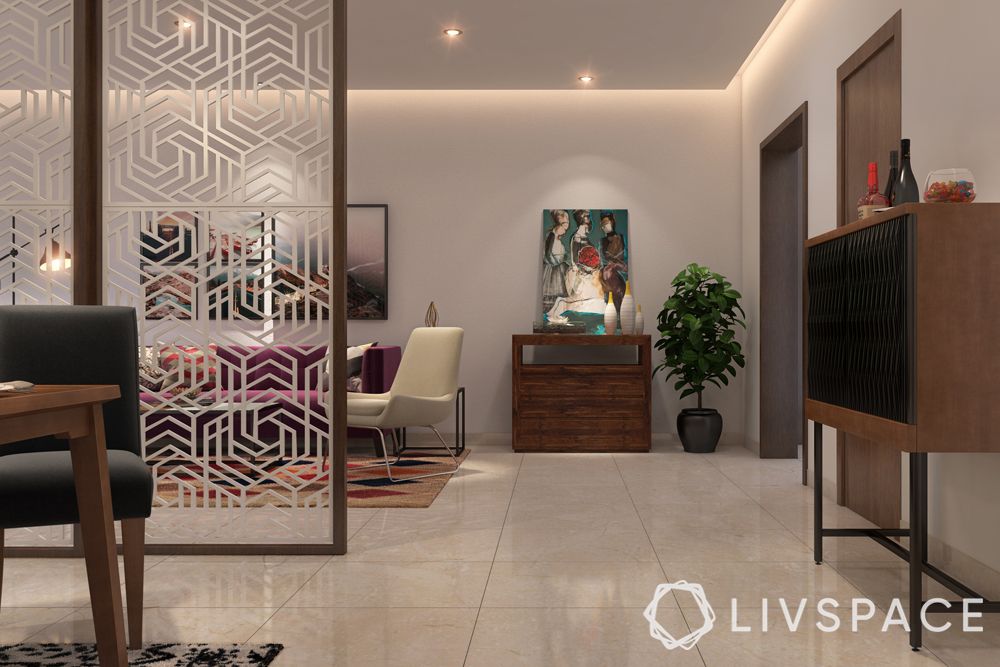
Vitrified tiles are extremely durable and weather heavy daily use. These tiles are both discoloration and scratch resistant and thus will easily hold good for a span of 10-15 years, when used with proper maintenance. However, vitrified tiles are prone to breakage if mishandled.
Though considerably stronger than most other types of flooring, marble tends to develop a yellowish tinge after some years of usage. With regular maintenance and adequate care, marble flooring can remain intact for around 25 years.
Marble vs Vitrified tiles #6: Cost

The cost of marble, being a naturally occurring material, is more than vitrified tiles. The price of flooring will also vary according to the grade, rarity of color etc. Typically the cost of Indian marble flooring (including the cost of the material, labor as well as cutting and polishing charges) is around Rs 250 per square feet while other varieties such as Italian marble can cost anywhere between Rs 650 to Rs 1000 per square feet.
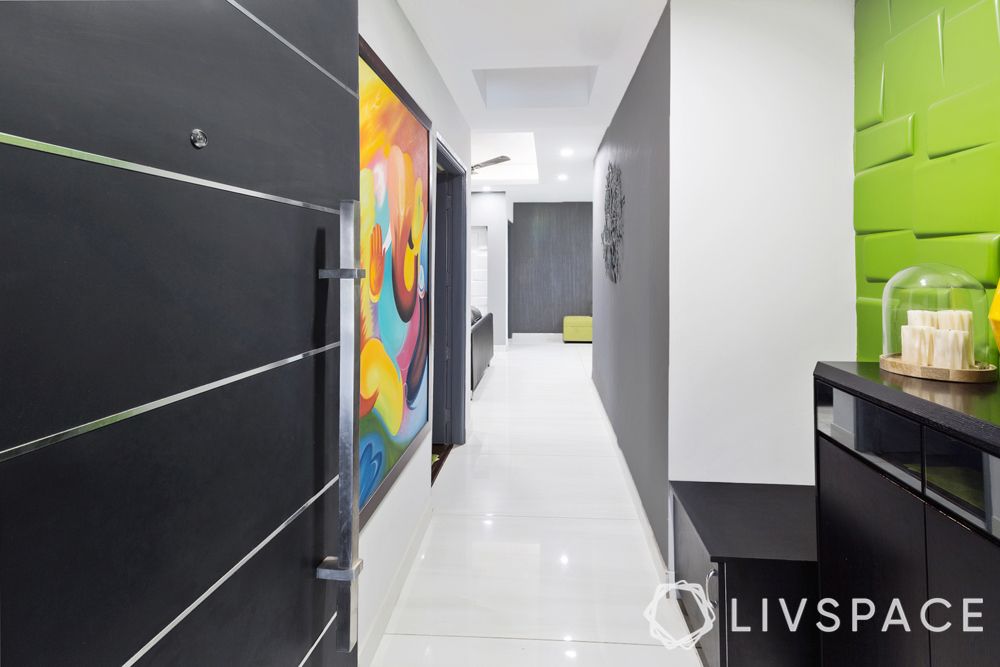
The cost of vitrified tile flooring largely depends on the design and brand you choose. The cost of flooring (including the cost of the tile, cost of other materials and labor charges) varies from around Rs 200 per square feet to Rs 300 per square feet. Nonetheless, being man-made, these tiles are more affordable when compared to marble.
Marble vs Vitrified tiles #7: Installation
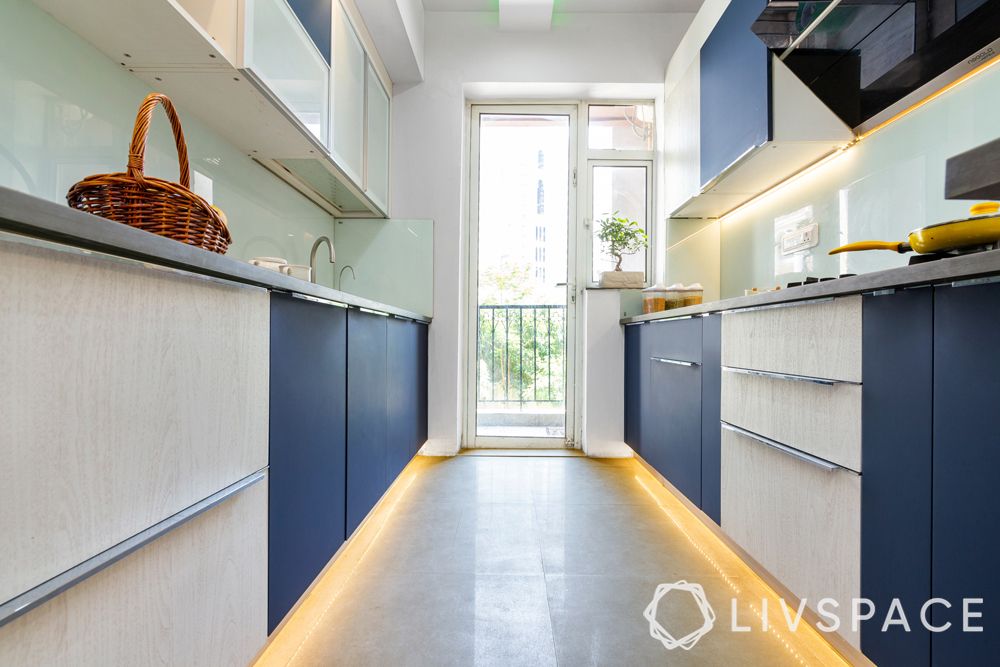
The installation process for marble is more time consuming and labor intensive. In most places in India, marble is usually not available in a ready-to-ship condition. You have to place an order, followed by cutting and grinding of marble to your requirements. Apart from the time required to lay marble flooring, the time for polishing and finishing also adds to the overall installation time.
Vitrified tiles are available in stores in a ready-to-ship condition and usually, it takes around 1.5 working days to lay flooring in a standard-size room. These tiles also require less setting time and you can use them shortly after installation. Since they are pre-polished, there is no finishing required on site. One can cut vitrified tiles manually and therefore can be laid in a variety of patterns and combinations to suit your needs. General thickness of the tile is around 10 to 12 mm which reduces the overall thickness of your floor.
Marble vs Vitrified tiles #8: Where to use them
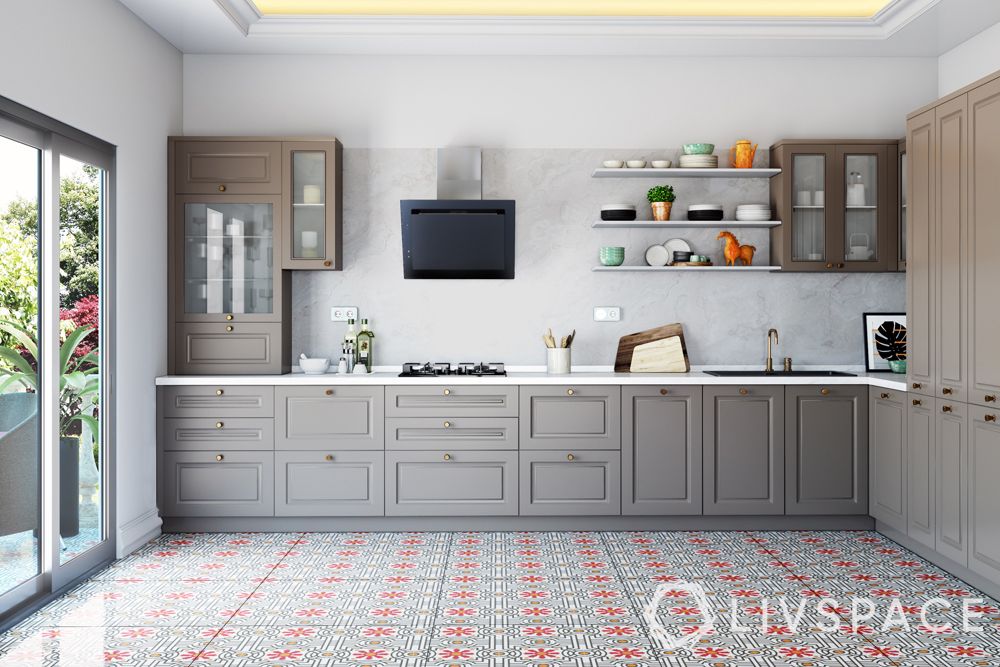
Natural stone marble flooring is the best choice for indoor areas like foyers, halls and bedrooms. Polished marble surfaces also tend to be slippery when used in bathrooms. Since marble absorbs water and stains easily, marble is not a practical choice for kitchens. Marble is generally not good for outdoor spaces since weathering and pollutants tend to wear out the surface.
You can use vitrified tiles for both interior and exterior surfaces, as well as high traffic areas. Since they are available in various anti-slip or slip-resistant finishes, vitrified tiles are good for bathrooms and kitchens as well.

Types of marble flooring

If you have opted for a luxurious marble flooring, it’s important to know which one to opt for according to its patterns, colours and texture.
- Carrara: Generally white, grey or bluish-grey in colour, with linear veining. They are used for decor and sculptures.
- Statuary: They come in neutral bases like light grey with dramatic and prominent veins. They can be used for countertops or flooring.
- Calacatta: Used mostly for flooring due to its high porosity. It is known for its thick vein patterns.
- Emperador: This dark coloured marble comes in shades of brown and has irregular vein patterns and fine grains. It can be used in high traffic areas of a home.
- Crema marfil: These come in a unique beige or yellow colour. They are perfect for outdoor cladding.
Summary
| Marble | Vitrified | |
| Water Absorption Rate | High | Low |
| Aesthetic Value | Symbol of luxury | Less authentic |
| Maintenance | High | Low |
| Durability | Lifespan of 25 years | Lifespan of 10-15 years |
| Cost | From Rs 250 per sq. ft. | From Rs 200 per sq. ft. |
| Installation | Time-consuming & labour intensive | Ready-to-ship and install |
Comfort and convenience
While highly polished marble looks amazing, it can be dangerous. When polished too much, marble can become slick and slippery. This increased the chances of injuries, especially in bathrooms. If you don’t want to use less polished marble, then use anti-skid rugs. Also, marble floors can get extremely cold. So, if you hate cold floors, either use warm rugs or opt for a floor heating system.
DIY marble flooring
Ideally, you should never DIY your marble flooring. But, if you must, here’s everything that you must keep in mind:
- The floor should be flat — if it isn’t, use a self-leveling compound to flatten it.
- Marble floors should be laid over cement boards.
Eco-friendly option
People are becoming more responsible about the environment, and thus, they are looking for eco-friendly alternatives. Marble is not an eco-friendly product as it is non-renewable. Also, the process of extracting marble is energy-intensive, which has a big impact on the environment. Vitrified tiles, on the other hand, can be recycled and are non-toxic, making them an eco-friendly option.
While choosing between marble and vitrified tiles let your budget, design requirement, space location and utility be your judgement criteria. While the former offers durability at a higher price, the other offers a myriad of design options at a lower price. Remember, flooring is the decor element that lives long run. Hence, choose wisely!
If you are looking for more inspiration, take a look at 8 Gorgeous Ideas to Use Marble.
Send in your comments and suggestions editor@livspace.com




















